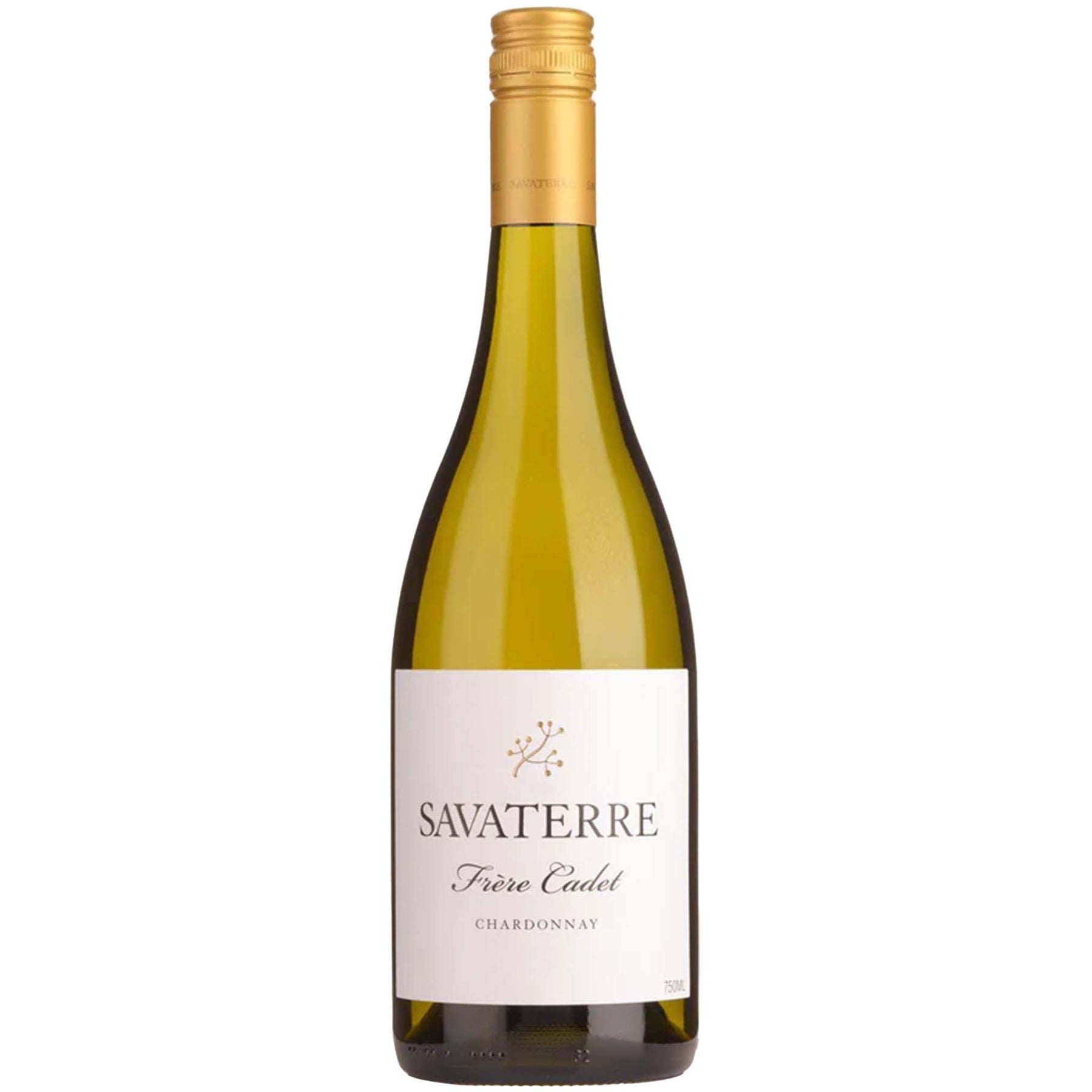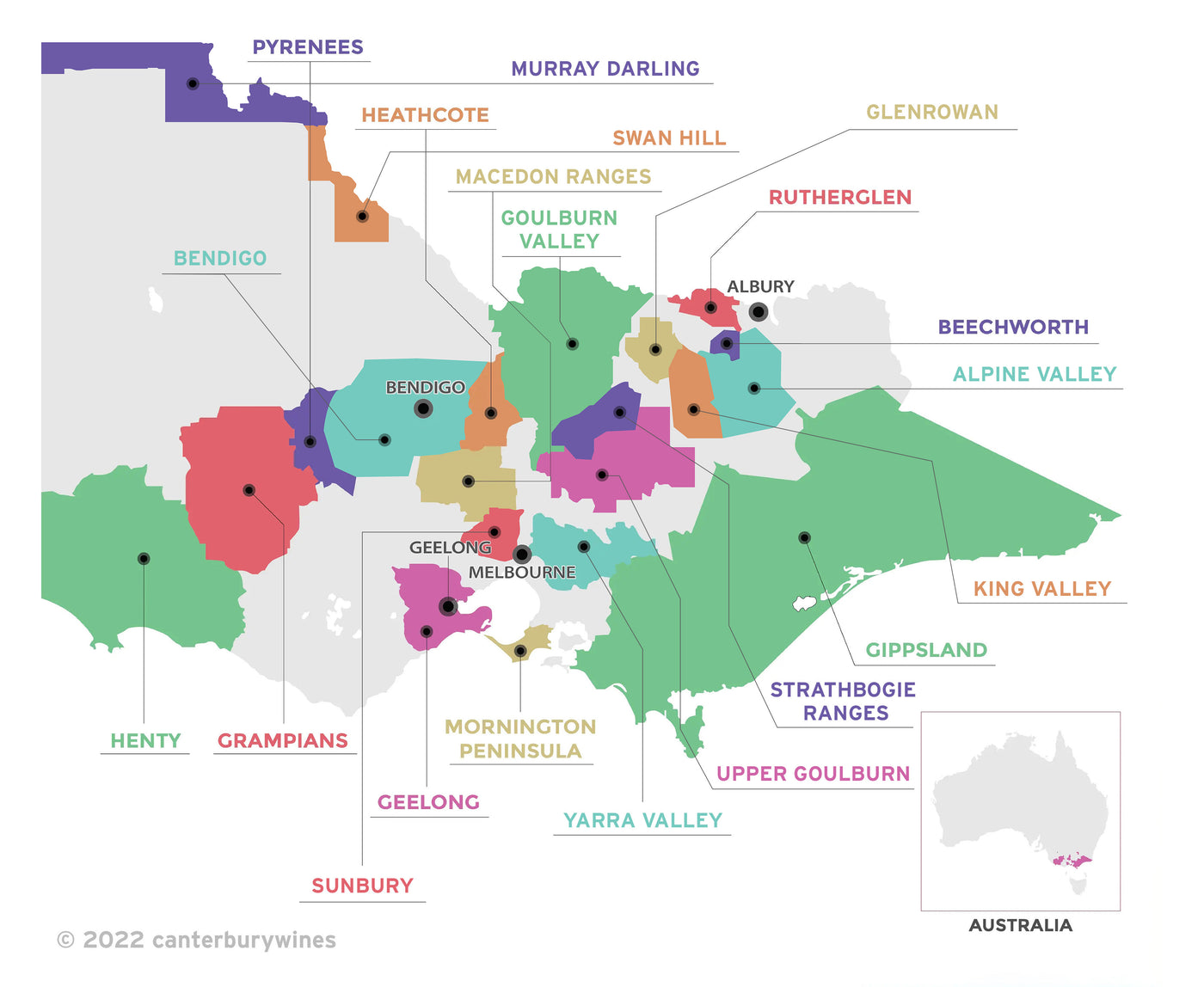
Savaterre Frère Cadet Chardonnay 2021
Style: White Wine
Closure: Screwcap
Savaterre Frère Cadet Chardonnay 2021
Warehouse
34 Redland Drive
Vermont VIC 3133
Australia
Critic Score: Not Rated
Alcohol: 13.5%
Size: 750 ml
Drink by: 2032
Savaterre's Frère Cadet (Younger Brother) chardonnay is sourced from younger estate vines and parcels of particularly outstanding grapes from select Beechworth vineyards. The wine is created with the same attention to detail that goes into the premium Savaterre chardonnay but is more accessible when young. All grapes are handpicked and fermented by indigenous yeasts. There is minimal interference, nature takes its course. The wine is matured for 18 months in the best French oak. Keppell Smith wants you to enjoy this wine on occasions when Grand Cru would not be appropriate.
"Once again, the 2021 stamp can be seen. Power, complexity and finesse. White and yellow nectarine aromas combine with hints of lemon rind, lime blossom, all spice, nuts and a slight hint of salinity and gun flint. The palate is more open than the estate. Already starting to shine. Multiple levels of flavours combine to display a powerful and harmonious wine that confirm the initial aroma perceptions. All encased in a mineral and balanced framework with a long persistent finish. This is a beautiful wine that is drinking well now and will continue to improve for the next 10-12 years." Savaterre
About the winery

The picturesque Savaterre vineyard lies nestled in the mountains of northeastern Victoria just outside the town of Beechworth. Situated across the road and in spitting distance from famed Beechworth producer Giaconda, it sits on an elevated site 440m above sea level and takes in panoramic views across the King Valley.
The site was purchased by Keppell Smith in 1996 after an extensive search across Australia’s wine regions. He believed the south facing slopes of the Beechworth hills, with their decomposing granite and clay soils, mild summer days and cool climate elevation, was the perfect 'terroir' to create great wines. He wondered why Beechworth, where such an icon of Australian wine in Giaconda was located, had so few vineyards. His take on his famous neighbour Rick Kinzbrunner was, "His was the first Australian wine with a European bent that I’d tasted – there was so much perfume, elegance, structure."
As to the Savaterre name, it is the name of Smith’s father’s property in Chesapeake Bay in Virginia, USA. A piece of 'low-lying swamp land', it is the complete antithesis to Keppell's Beechworth property!
Ex-policeman Keppell Smith spent a few years in the money markets before he decided to become a winemaker. During his search for the perfect vineyard, he worked with a number of key figures in the wine industry. Heavily influenced by his time with Phillip Jones at Bass Phillip, he promptly planted chardonnay and pinot noir at Savaterre. The vines were close planted at 7,500 vines per hectare, which allows the vine to carry a smaller crop and direct all its energies to producing intense flavours. The ancient granitic 'buckshot' soil is rich in minerals and provides excellent drainage, whilst the underlying decomposed clay provides water to the vines in summer. This ancient soil naturally limits the cropping level to less than 4.5 tons per hectare. Smith added shiraz on its own rootstock and planted at 8,000 vines per hectare to the vineyard in 2003. Today there are 8ha of chardonnay, pinot noir, shiraz and sagrantino on the 40ha Savaterre property.
Savaterre's first vintage was in 2000, just two barrels of chardonnay. The potential of the vineyard became obvious very early on and was named in the top 25 vineyards in Australia in 2006 by Australian Sommelier magazine: "This, it has to be said, is a spectacular vineyard with spectacular potential, and as the 2002 wines show, that potential is sheeting through with a clarity that is shattering. And it’s the vineyard that is doing it. The south-facing slope that fronts into the teeth of the Victorian Alps, the ancient rocky soils, the high altitude, the warm summers and the cold, cold nights. This is a dramatic landscape and the truth is that the wines are all about that: the vineyard was only planted in 1997, all chardonnay and pinot noir, but the near-cinematic quality of this site is already blindingly obvious. The potential of this place is limitless."
Keppell looks more to the wines, winemaking and viticulture of the Old World as his inspiration, ranging from vineyard aspect through to the use of natural yeasts and the finest French barriques. His winemaking technique is a minimalistic, hands-off approach in the tradition of the fine wines of Burgundy. "It is all about the quality of the fruit from the fantastic site we have here at Savaterre. Minimal intervention and long, slow elevage in cool dark cellars are the cornerstones of our winemaking philosophy," he says.
In the winery Smith says he’s just babysitting, "I leave it alone, no yeast is added to the basket pressed juice. It is all up to wild yeast to start, maintain and finish the fermentation. I add sulphur, occasionally a little acid. The attention to detail is crucial; every 1% you muck up, it’s cumulative." The wines then undergo around 18 months ageing on the lees in custom-made French casks. The lees add a creaminess to the texture of the whites (they are not stirred) and for the reds he says, "lees really help the wood marry with the wine. It’s the gravy between the peas and the roast, the juice that brings it all together." The result is a range of wines with incredible purity, minerality and elegance.

Victoria
Victoria is home to more than 800 wineries across 21 wine regions. The regions are Alpine Valley, Beechworth, Bendigo, Geelong, Gippsland, Glenrowan, Goulburn Valley, Grampians, Heathcote, Henty, King Valley, Macedon Ranges, Mornington Peninsula, Murray Darling, Pyrenees, Rutherglen, Strathbogie Ranges, Sunbury, Swan Hill, Upper Goulburn and Yarra Valley.
Victoria's first vines were planted at Yering in the Yarra Valley in 1838. By 1868 over 3,000 acres had been planted in Victoria, establishing Victoria as the premier wine State of the day. Today, the original vineyards planted at Best's Wines are among the oldest and rarest pre-phylloxera plantings in the world.
Victoria's climate varies from hot and dry in the north to cool in the south and each wine region specialises in different varietals. For example, Rutherglen in the north is famous for its opulent Muscats and Topaque and bold reds, while the many cooler climate regions near Melbourne produce world class Chardonnay and pinot Noir. Victoria is truly a wine lover's playground.

